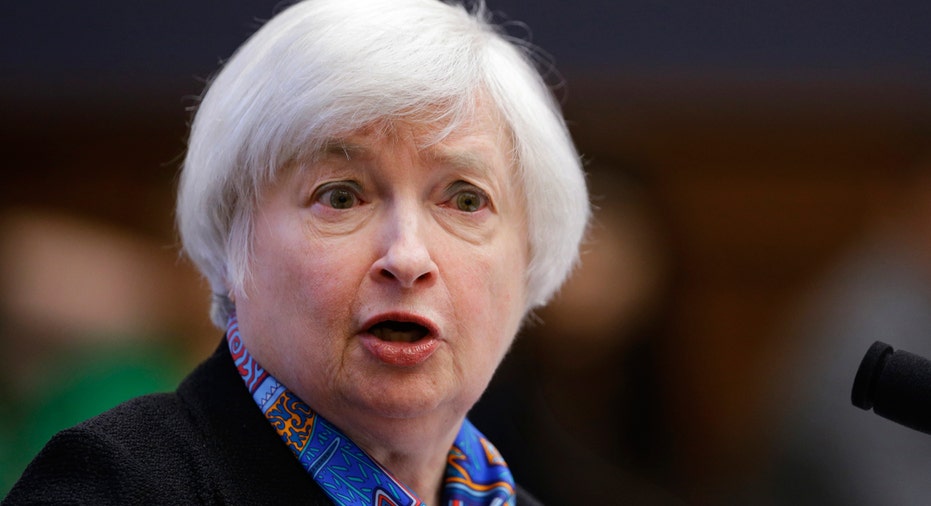Brexit Delivers Another Blow to Fed's Rate-Hike Plan

Uncertainty has been the catch-all phrase when Federal Reserve officials describe the current market and economic environment both at home and abroad. But thanks to the United Kingdom’s unexpected and unprecedented decision on Thursday to end its more than 40-year membership in the European Union, the word uncertainty has taken on a whole new meaning. And it has left Fed Chair Janet Yellen in a tight spot.
Ahead of the British referendum, market analysts and Fed watchers predicted a close outcome that favored the U.K. remaining in the 28-nation bloc. At the conclusion of its two-day policy meeting last week, the U.S. central bank opted to keep rates steady, citing the usual suspects of slowly-rising inflation and low productivity, in addition to new concerns over an uncertain outcome from the so-called Brexit vote.
Now, with the U.K. finding itself in the position of figuring out how to unwind from the EU, central bankers across the world, who have used many creative monetary policy efforts – including negative rates – to keep the global economy from entering recession territory, are running out of tools in their toolbox.
“Rates are going to stay lower for longer,” Chris Gaffney, EverBank World Markets president, said. “We’re not going to see the FOMC increase rates this year because global growth is going to slow [in the wake of the Brexit vote].”
HSBC economists say just how quickly and sharply the U.K. economy declines – and for that matter, the global economy as a whole –will depend on a host of factors including how exposed various nations are to weakening EU demand or how sustained the plunge in global markets will be. Fear ricocheted throughout equity markets worldwide on Friday, sending U.S. stocks down more than 2%.
“Even for countries with relatively low trade exposure, heightened volatility and uncertainty are likely to lead to weaker growth through delayed investment and consumer spending and weaker employment,” the HSBC economists wrote in a note Friday.
They noted the Organization for Economic Cooperation and Development estimates that financial shocks and weaker European demand have the potential to lower GDP in the BRICS nations -- Brazil, Russia, India, China, and South Africa – and other non-OECD economies by more than 0.5 percentage point by 2018. Further, more risk-off sentiment in global markets could leave the emerging market central banks without necessary leeway to cut interest rates. Additionally, more easing from the Bank of Japan and others could force more currency-market manipulation. In short: It would hinder the Fed’s ability to normalize rates as central banks around the world continue to cut deeper into already negative interest-rate territory.
“It puts the Fed in a position where rate hikes are off the table for three to six months, likely for the rest of this year,” Tony Roth, chief investment officer at Wilmington Trust, said. “[Brexit] will probably create a U.K. recession in the short term and deplete global GDP.”
In addition, all the uncertainty about the future of the European Union and its member nations’ participation, have helped strengthen the U.S. dollar. In recent trade, the euro dropped 2.26% against the greenback to $1.11.
Further, U.K. investors have already seen an immediate 7% depreciation in their currency thanks to a plunge in the British pound in the aftermath of the vote’s outcome. Sterling dropped more than 10% Thursday night into Friday morning, notching the lowest level since 1985, before recovering slightly to trade at $1.36 against the U.S. dollar. The British currency, though, had traded at 2016 highs of $1.50 against the greenback at the close of trade in the U.S. Thursday before polls in the U.K. closed.
Roth said while the euro’s weakening against the dollar doesn’t directly pertain to the U.K.’s Brexit decision since the country uses its pound rather than the common eurozone currency, the implications about what the U.K. decision means for other nation’s futures in the EU forces the trade.
“It’s uncertainty on top of uncertainty in the euro, which puts upward pressure on the dollar and significantly tightens financial conditions in the U.S., leaving little room for the Fed to raise rates,” he explained. “It’s negative for the banking sector in the U.S. because it continues to labor under increasingly difficult capital requirements, regulation, and low rates, which makes it hard to make money.”
For its part, fed funds futures – a tool used to predict market expectations for changes in U.S. monetary policy, show a near zero-percent chance of a rate rise at the Fed’s July 26-27 meeting, and just a 25% chance of at least one rate hike by the December meeting.



















